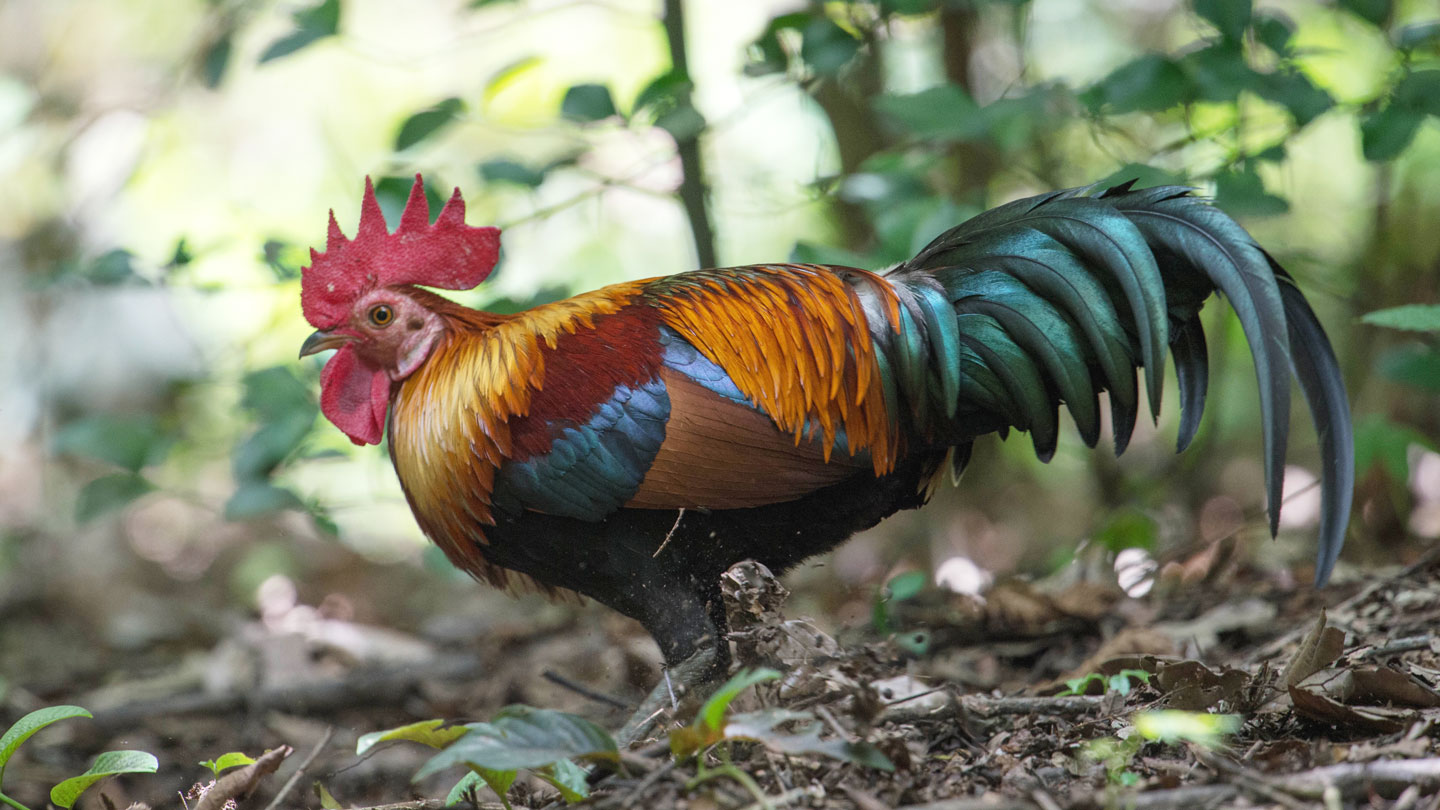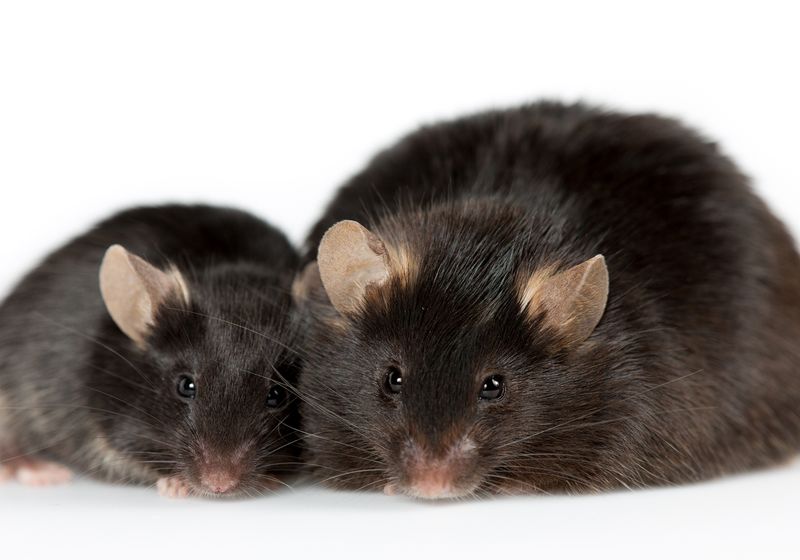Today’s red jungle fowl — the wild forebears of the domesticated chicken — are becoming more chickenlike. New research suggests that a large proportion of the wild fowl’s DNA has been inherited from chickens, and relatively recently.
Ongoing interbreeding between the two birds may threaten wild jungle fowl populations’ future, and even hobble humans’ ability to breed better chickens, researchers report January 19 in PLOS Genetics.
Red jungle fowl (Gallus gallus) are forest birds native to Southeast Asia and parts of South Asia. Thousands of years ago, humans domesticated the fowl, possibly in the region’s rice fields (SN: 6/6/22).
Science News headlines, in your inbox
Headlines and summaries of the latest Science News articles, delivered to your email inbox every Thursday.
Thank you for signing up!
There was a problem signing you up.
“Chickens are arguably the most important domestic animal on Earth,” says Frank Rheindt, an evolutionary biologist at the National University of Singapore. He points to their global ubiquity and abundance. Chicken is also one of the cheapest sources of animal protein that humans have.
Domesticated chickens (G. gallus domesticus) were known to be interbreeding with jungle fowl near human settlements in Southeast Asia. Given the unknown impacts on jungle fowl and the importance of chickens to humankind, Rheindt and his team wanted to gather more details. Wild jungle fowl contain a store of genetic diversity that could serve as a crucial resource for breeding chickens resistant to diseases or other threats.
The researchers analyzed and compared the genomes — the full complement of an organism’s DNA — of 63 jungle fowl and 51 chickens from across Southeast Asia. Some of the jungle fowl samples came from museum specimens collected from 1874 through 1939, letting the team see how the genetic makeup of jungle fowl has changed over time.
Over the last century or so, wild jungle fowl’s genomes have become increasingly similar to chickens’. Between about 20 and 50 percent of the genomes of modern jungle fowl originated in chickens, the team found. In contrast, many of the roughly 100-year-old jungle fowl had a chicken-ancestry share in the range of a few percent.
The rapid change probably comes from human communities expanding into the region’s wilderness, Rheindt says. Most modern jungle fowl live in close vicinity to humans’ free-ranging chickens, with which they frequently interbreed.
Such interbreeding has become “almost the norm now” for any globally domesticated species, Rheindt says, such as dogs hybridizing with wolves and house cats crossing with wildcats. Pigs, meanwhile, are mixing with wild boars and ferrets with polecats.
Subscribe to Science News
Get great science journalism, from the most trusted source, delivered to your doorstep.
Wild populations that interbreed with their domesticated counterparts could pick up physical or behavioral traits that change how the hybrids function in their ecosystem, says Claudio Quilodrán, a conservation geneticist at the University of Geneva not involved with this research.
The effect is likely to be negative, Quilodrán says, since some of the traits coming into the wild population have been honed for human uses, not for survival in the local environment.
Wild jungle fowl have lost their genetic diversity as they’ve interbred too. The birds’ heterozygosity — a measure of a population’s genetic diversity — is now just a tenth of what it was a century ago.
“This result is initially counterintuitive,” Rheindt says. “If you mix one population with another, you would generally expect a higher genetic diversity.”
But domesticated chickens have such low genetic diversity that certain versions of jungle fowl genes are being swept out of the population by a tsunami of genetic homogeneity. The whittling down of these animals’ genetic toolkit may leave them vulnerable to conservation threats.
“Having lots of genetic diversity within a species increases the chance that certain individuals contain the genetic background to adapt to a varied range of different environmental changes and diseases,” says Graham Etherington, a computational biologist at the Earlham Institute in Norwich, England, who was not involved with this research.
A shallower jungle fowl gene pool could also mean diminished resources for breeding better chickens. The genetics of wild relatives are sometimes used to bolster the disease or pest resistance of domesticated crop plants. Jungle fowl genomes could be similarly valuable for this reason.
“If this trend continues unabated, future human generations may only be able to access the entirety of ancestral genetic diversity of chickens in the form of museum specimens,” Rheindt says, which could hamper chicken breeding efforts using the wild fowl genes.
Some countries such as Singapore, Rheindt says, have started managing jungle fowl populations to reduce interbreeding with chickens.














